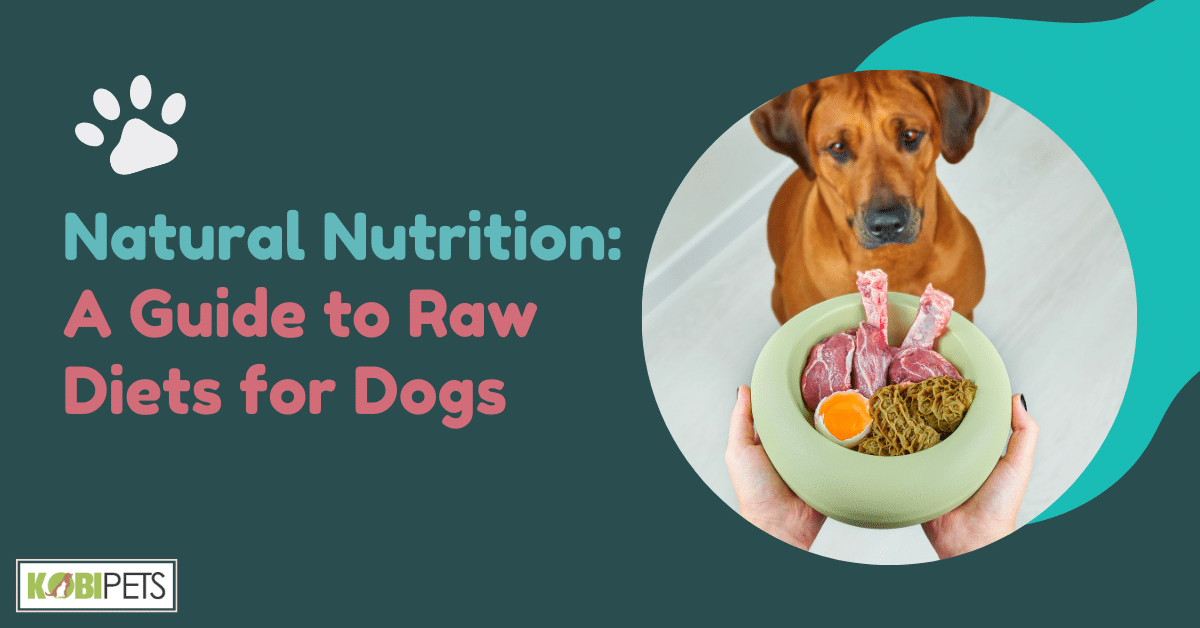
Natural nutrition is essential for the well-being of our canine companions. Raw diets for dogs, often referred to as the BARF (Biologically Appropriate Raw Food) diet, prioritize whole, unprocessed foods like raw meat, bones, and vegetables. By embracing this approach, pet owners can provide their furry friends with a diet that closely mirrors their ancestral eating habits, promoting better overall health and vitality.
The growing interest in raw diets for dogs is more than just a trend; it’s a shift toward natural nutrition that’s gaining momentum. To embark on this journey successfully, it’s crucial to understand the principles behind raw feeding and its benefits for our canine companions. This guide will provide a concise overview of these principles and highlight the advantages of embracing a natural diet for your dog’s well-being.
The Basics of Raw Feeding
Raw feeding is a dietary approach for dogs rooted in replicating their ancestral diets, emphasizing uncooked, minimally processed foods. This philosophy acknowledges dogs’ carnivorous nature and aims to provide them with a nutritionally balanced diet mirroring their wild predecessors.
Within the raw feeding spectrum, two main approaches have gained prominence: the Prey Model and BARF (Biologically Appropriate Raw Food). The Prey Model focuses on whole prey items like raw meat, bones, and organs to closely simulate a wild canine’s diet.
In contrast, BARF takes a broader approach, incorporating raw ingredients like fruits, vegetables, and supplements to create a balanced diet that aligns with a dog’s evolutionary needs. Understanding these approaches is essential for those considering raw feeding for their pets, as it allows for customization based on individual dog requirements and preferences.
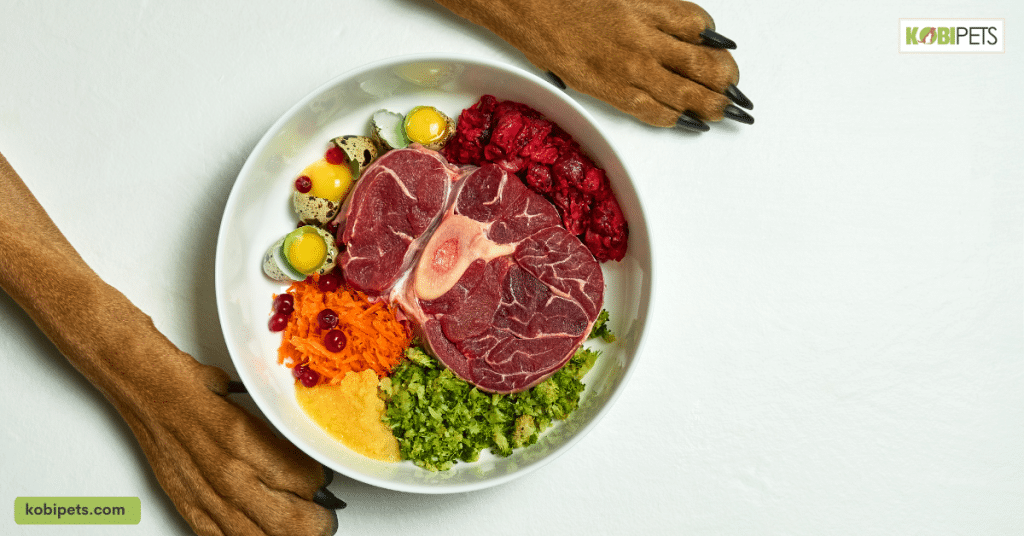
Benefits of Raw Diets
As the popularity of raw diets for dogs continues to grow, it’s important to explore the compelling reasons behind this dietary choice. In this section, we delve into the numerous benefits that raw feeding can bring to your canine companion. These advantages extend far beyond the surface, impacting your dog’s overall health and well-being.
1. Improved Digestion
Raw diets have been found to promote healthier digestion in dogs. The absence of processed ingredients and additives commonly found in commercial dog food can significantly reduce the risk of digestive issues.
Dogs fed a raw diet tend to experience fewer instances of food sensitivities, gas, bloating, and diarrhea. The gentle nature of raw foods is particularly beneficial for dogs with sensitive stomachs, as it provides a natural and easily digestible source of nutrients.
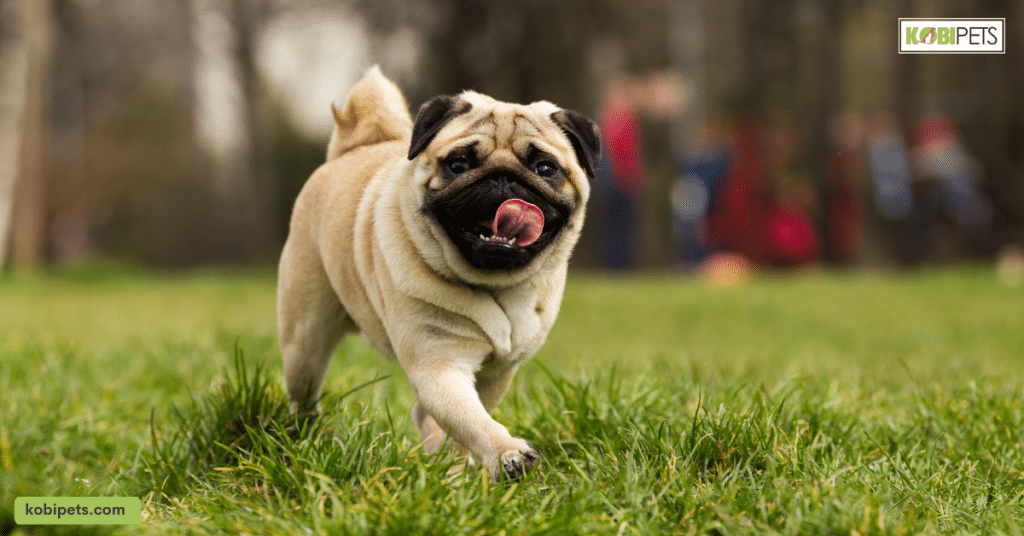
2. Healthier Skin and Coat
One of the most noticeable and rewarding benefits of raw feeding is the transformation it can bring to your dog’s skin and coat. A balanced raw diet is inherently rich in essential fatty acids, vitamins, and minerals, all of which play a vital role in maintaining healthy skin and a lustrous coat. Over time, you’ll likely observe shinier, softer fur and a reduction in skin irritations, itching, and dryness.
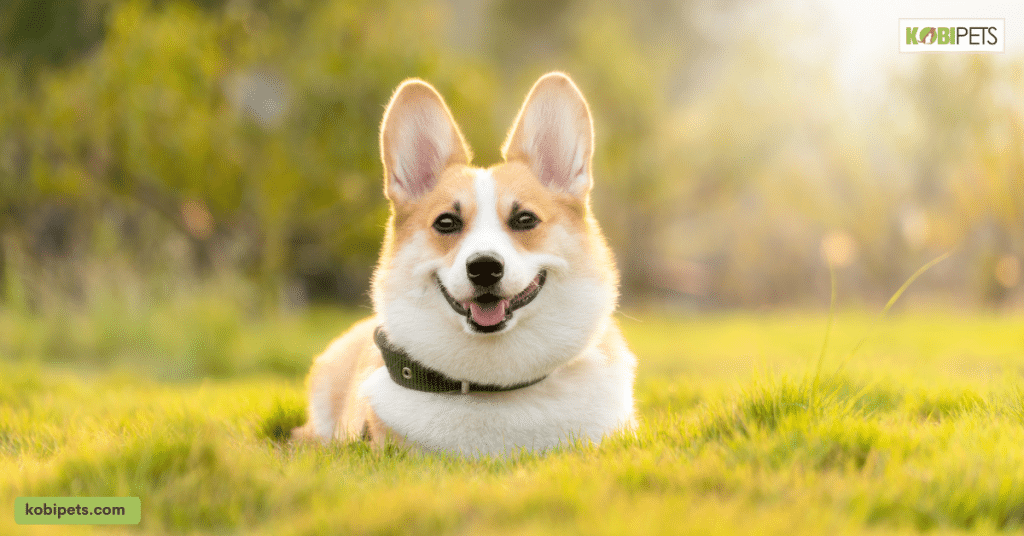
3. Reduced Allergies
Many dogs suffer from food allergies and intolerances, which can lead to a range of uncomfortable symptoms, including itching, rashes, digestive problems, and ear infections. Raw diets, being free from common allergens present in commercial dog food such as wheat, soy, and artificial additives, can provide relief to allergic pups.
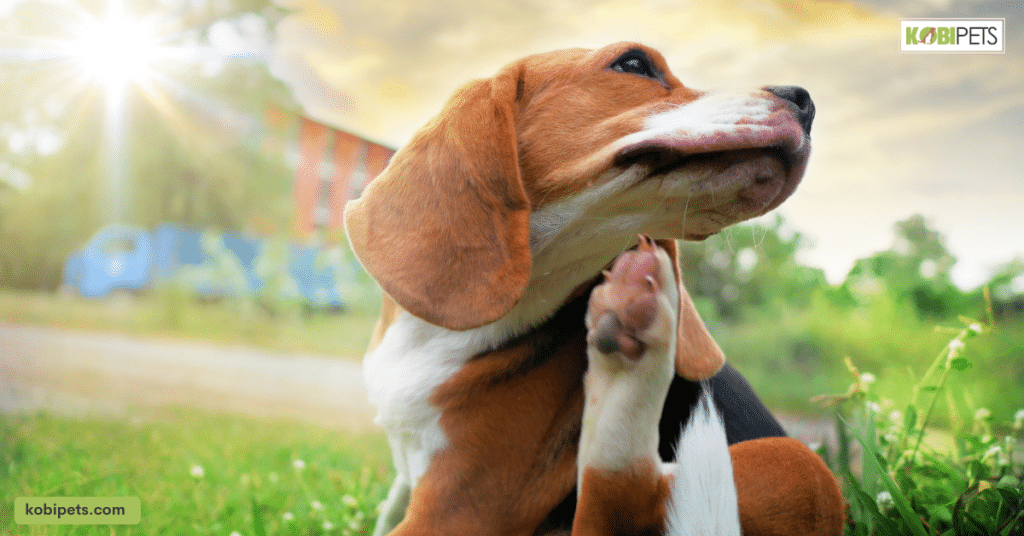
4. Enhanced Dental Health
Chewing on raw meaty bones is a natural and enjoyable activity for dogs that has the added benefit of promoting dental health. The act of gnawing on bones helps remove plaque and tartar buildup, naturally cleaning your dog’s teeth.
This can lead to better dental health and reduced instances of dental problems, such as gum disease and tooth decay. Maintaining healthy teeth and gums through raw feeding can save you from the expense and stress of dental procedures, while also ensuring your dog’s overall well-being.
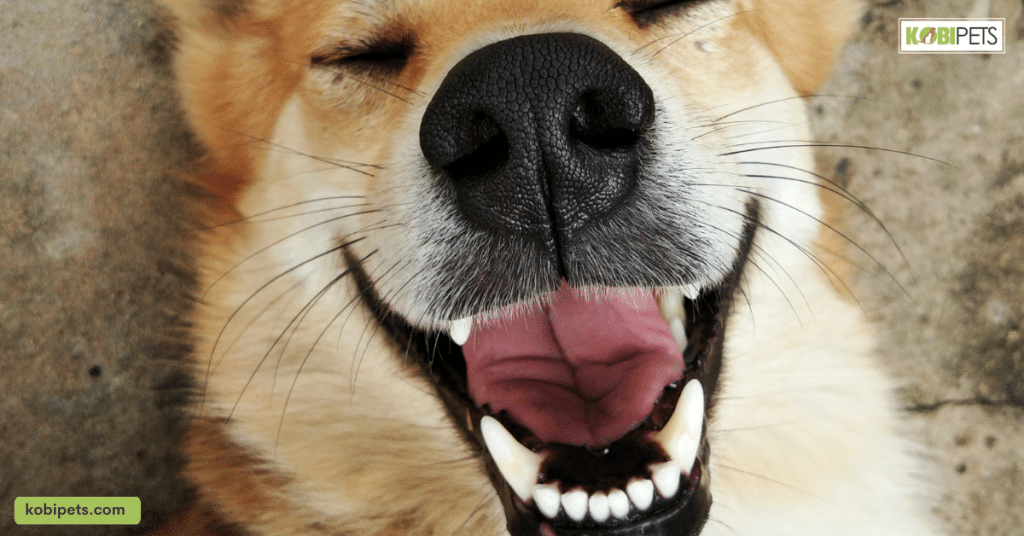
5. Improved Energy and Vitality
Dogs on raw diets often exhibit increased energy levels and a greater overall sense of vitality. This boost in energy can be attributed to the abundance of high-quality nutrients present in raw foods, which provide the essential fuel for an active and healthy lifestyle. Dogs fed a well-balanced raw diet tend to be more alert, playful, and engaged, allowing them to enjoy a more vibrant and fulfilling life.
These remarkable benefits are just a glimpse into the positive effects that raw diets can bring to your four-legged friend. By providing your dog with a nutritionally balanced and biologically appropriate diet, you’re not only enhancing their quality of life but also investing in their long-term health and happiness.
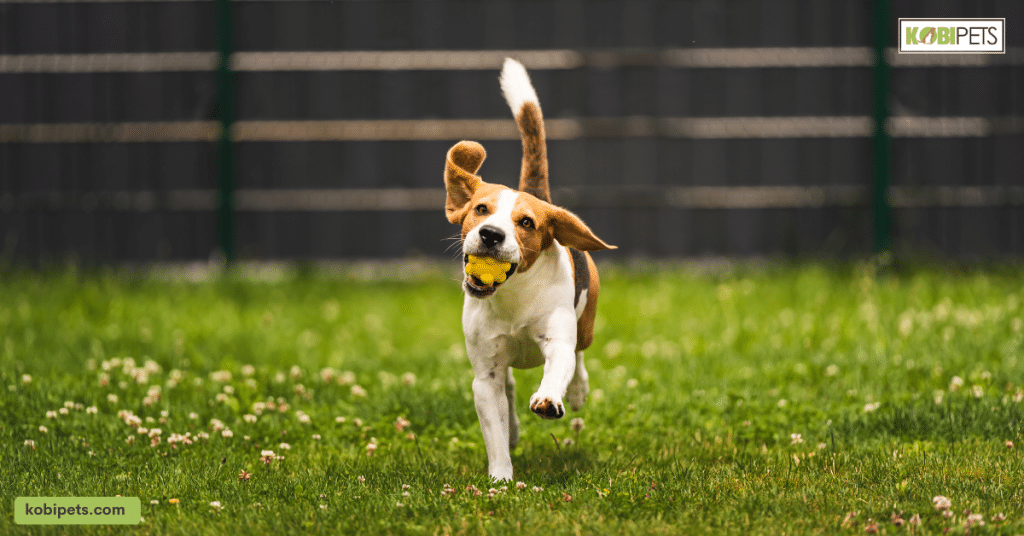
Transitioning to a Raw Diet
Transitioning your dog from a commercial diet to a raw one is a significant change that should be approached with care and patience. To ensure a smooth switch, follow these steps:
- Research and Preparation: Begin by thoroughly researching raw feeding and the specific dietary requirements of your dog’s breed and size. Gather all the necessary ingredients, including high-quality raw meats, bones, and organs.
- Gradual Introduction: Start by incorporating small amounts of raw food into your dog’s regular meals. Mix a small portion of raw meat with their commercial dog food. Over the course of several days, gradually increase the ratio of raw food while decreasing the commercial food.
- Monitor Digestive Health: Pay close attention to your dog’s digestive health during the transition. Some dogs may experience temporary diarrhea or soft stools as their bodies adjust to the new diet. This is normal.
- Balancing Nutrients: Ensure your dog’s raw diet is nutritionally balanced. Include a variety of protein sources, such as poultry, beef, and fish, to provide a wide range of essential nutrients. Incorporate organ meats, bones for dental health, and some fruits and vegetables for added fiber and vitamins.
- Portion Control: Determine the appropriate portion size for your dog based on their weight, age, and activity level. Avoid overfeeding, as this can lead to weight gain. Monitor their weight and adjust portions accordingly.
By following these steps and closely observing your dog’s health and behavior, you can successfully transition them to a raw diet, ensuring their well-being and enjoyment of the numerous benefits natural nutrition has to offer.
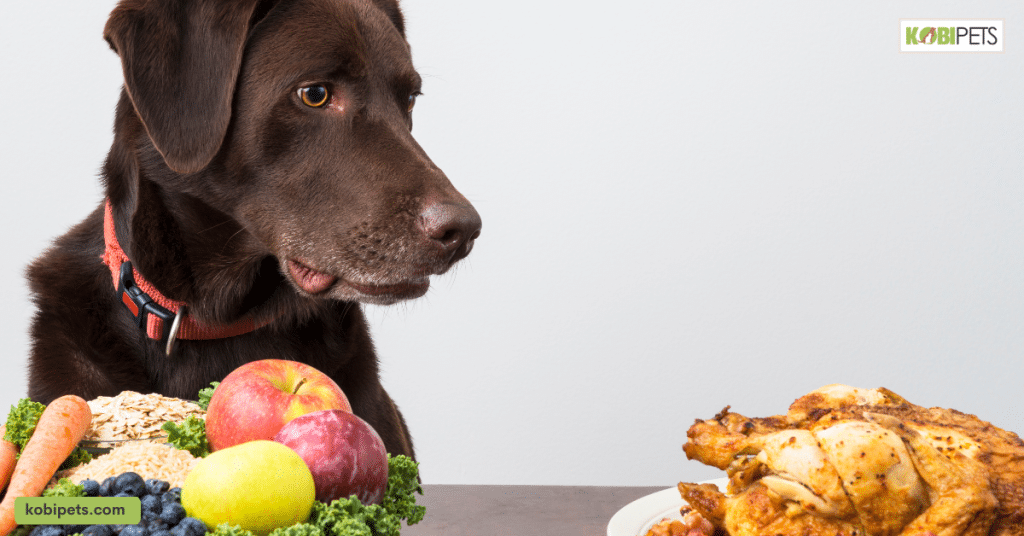
Meal Preparation and Safety
Preparing raw dog food is more than just providing your furry companion with a nutritious meal; it’s about ensuring their safety and well-being. In this section, we will delve into the essential aspects of meal preparation and safety for your canine friend. Whether you’re new to raw feeding or looking for a refresher, these guidelines will help you navigate the process with confidence.
- Starting with Cleanliness: Prioritize hygiene by thoroughly washing your hands, utensils, and surfaces before and after handling raw ingredients to prevent cross-contamination.
- Selecting Quality Ingredients: Choose fresh, human-grade meats, organs, and bones from reliable sources. Keep ingredients frozen or refrigerated until use.
- Balanced Meals: Ensure your dog’s diet is balanced by including a variety of protein sources, organ meats, and if desired, some vegetables or fruits.
- Portion Sizes and Feeding Frequency: Consult your veterinarian to determine the appropriate portion size based on your dog’s weight, age, and activity level. Follow a feeding schedule that suits your dog’s needs.
- Serving Promptly: Serve the prepared raw meal promptly to reduce the risk of bacterial proliferation.
- Storage: Store raw ingredients and prepared meals in dedicated sections of your refrigerator or freezer, using airtight containers to prevent odors and cross-contamination.
By following these crucial guidelines for meal preparation and safety, you can provide your dog with the benefits of a raw diet while minimizing the risks associated with foodborne illnesses. Prioritizing cleanliness, using quality ingredients, and responsible handling are key steps in ensuring the health and well-being of your beloved canine companion.
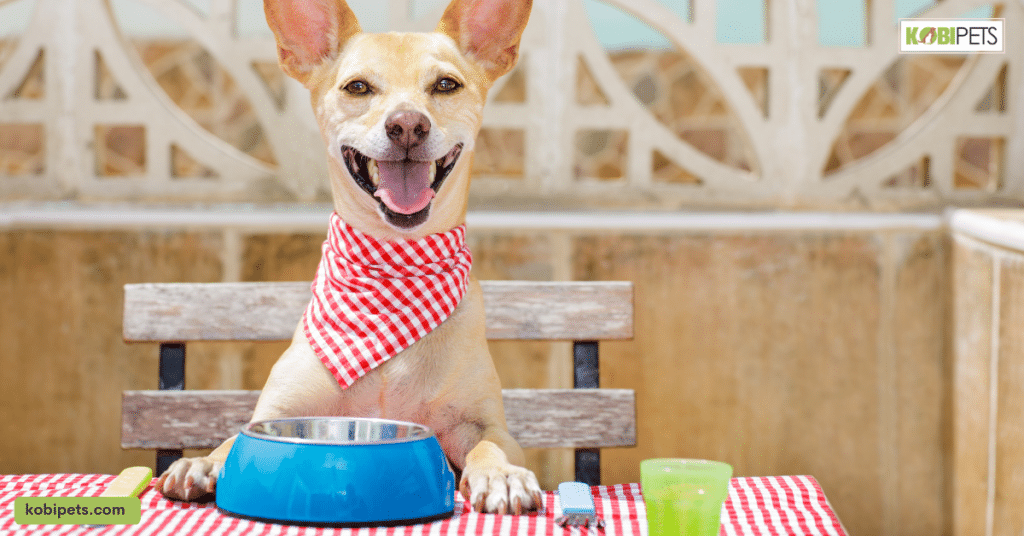
Monitoring Your Dog’s Health
Ensuring your dog’s well-being on a raw diet goes beyond meal preparation; it involves vigilant health monitoring and responsible adjustments. Here’s how to keep a close eye on your canine companion’s health:
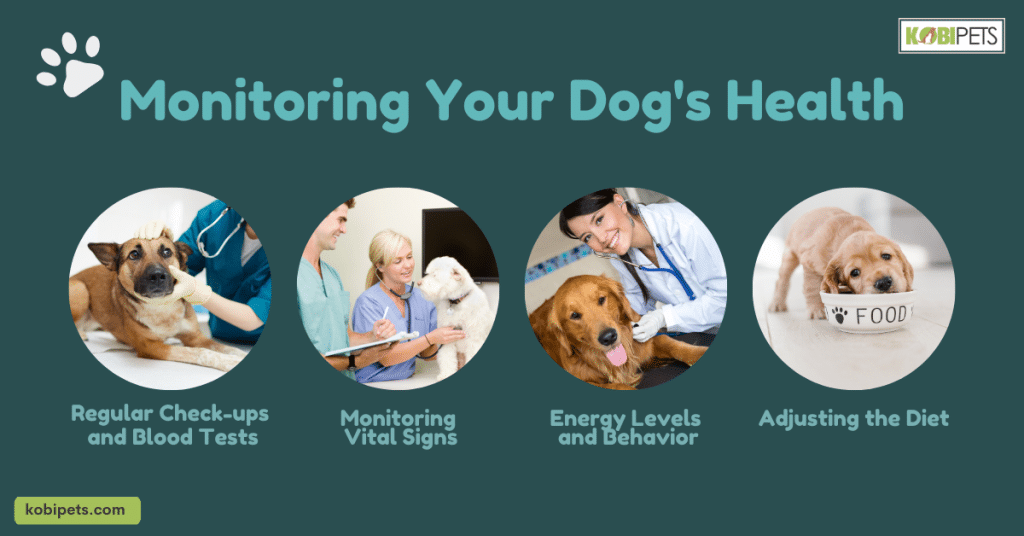
Monitoring Your Dog’s Health
- Regular Check-ups and Blood Tests: Regular veterinary check-ups are essential for dogs on raw diets. These visits help detect any health issues early, ensuring prompt intervention if necessary. Blood tests can provide insights into your dog’s nutritional status and identify any deficiencies or excesses that need attention.
- Monitoring Vital Signs: Observe your dog’s vital signs to gauge their overall health. Regularly weigh your dog to track their body condition and ensure they’re maintaining a healthy weight. A well-balanced raw diet should support your dog’s ideal weight.
- Energy Levels and Behavior: Monitor your dog’s energy levels and behavior. A balanced raw diet should provide them with the necessary nutrients for an active and happy life.
- Adjusting the Diet: Tailor your dog’s diet to their specific needs. Puppies, adult dogs, and seniors have different nutritional requirements. Consider their activity level and health status when making dietary adjustments.
By maintaining a proactive approach to your dog’s health, you can enjoy the benefits of a raw diet while ensuring that their nutritional needs are met throughout their life stages. Regular check-ups, vigilant monitoring, and adjustments when needed are key to a happy and healthy canine companion.
Conclusion
Monitoring your dog’s health is crucial while on a raw diet. Regular vet check-ups and blood tests are vital for early issue detection. Keep an eye on weight, coat, and energy levels for overall health. Adjust their diet based on age, activity, and health. By staying attentive, you ensure your dog thrives on a raw diet and builds a lasting bond.






